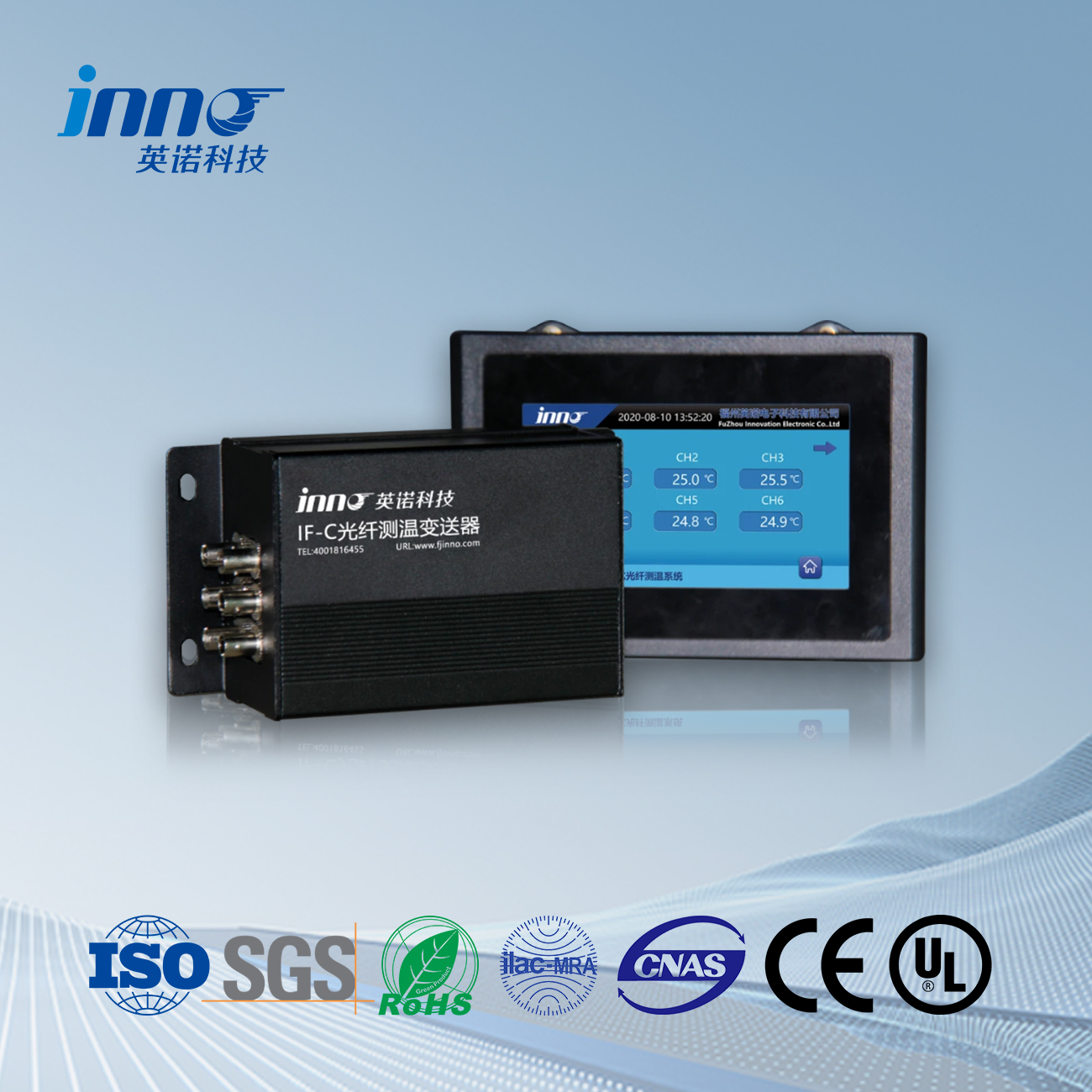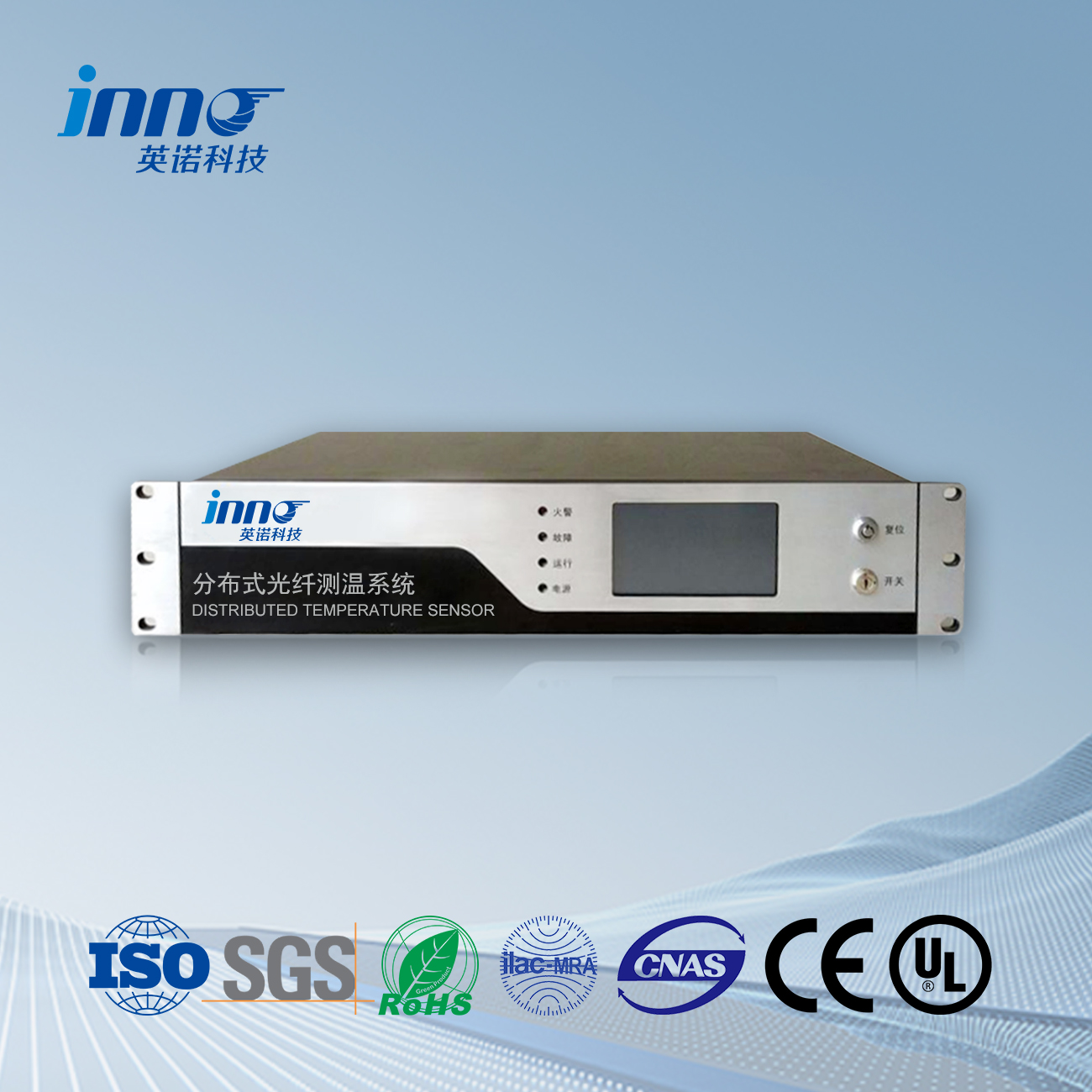Brand of fiber optic temperature sensor
A true brand ranking may not necessarily fully introduce so many domestic enterprises. Some well-known domestic brands of fiber optic temperature sensors include FJINNO, while other companies in the top 10 are not introduced.
Fiber optic sensors are sensors developed based on optical signals. The traditional temperature measurement method is based on signals such as thermocouples, thermistors, and pyroelectric detectors. The development of temperature sensors has been many years, and fiber optic sensors can be widely used in situations with strong electromagnetic interference or flammable and explosive materials. Traditional temperature sensors based on other temperature measurement methods will be greatly limited.
פיברע אַפּטיק טעמפּעראַטור סענסערs and measurement technology are important development directions in the power electrical industry. Due to its small size, ליכט וואָג, flexibility, good electrical insulation, flexible bending, קעראָוזשאַן קעגנשטעל, large measurement range, and high sensitivity, optical fibers can serve as a reminder and expand the range of use in other temperature sensors, achieving products and methods that traditional temperature sensors cannot measure temperature.
In addition to its unique applications in temperature measurement, fiber optic sensing technology also has the characteristics of fast response, wide frequency band, explosion-proof, flameproof, and electromagnetic interference resistance compared to traditional temperature measurement instruments.
די יקערדיק ארבעטן פּרינציפּ פון פיברע אַפּטיק סענסאָרס איז צו שיקן די ליכט סיגנאַל פון די ליכט מקור דורך די פיברע אַפּטיק אין די מאָדולאַטאָר., קאָזינג די געמאסטן פּאַראַמעטערס צו ינטעראַקט מיט די ליכט קומט אין די מאַדזשאַליישאַן געגנט, ריזאַלטינג אין ענדערונגען אין די אָפּטיש פּראָפּערטיעס פון די ליכט (אַזאַ ווי ינטענסיטי, ווייוולענגט, אָפטקייַט, פאַסע, פּאָולעראַזיישאַן שטאַט, אאז"ו ו), שיין די מאַדזשאַלייטיד סיגנאַל מקור. נאָך זייַענדיק געשיקט דורך די פיברע אַפּטיק צו די פאָטאָדעטעקטאָר און דעמאָדולאַטעד, די געמאסטן פּאַראַמעטערס זענען באקומען.
The application scope of fiber optic sensors
The characteristics of fiber optic sensors are sensitivity, precision, strong adaptability, compactness, and intelligence. Fiber optic has many unique characteristics compared to other sensors, such as resistance to electromagnetic and atomic radiation interference, fine diameter, soft texture, און ליכט וואָג; Insulation, water resistance, high temperature resistance, קעראָוזשאַן קעגנשטעל, אאז"ו ו. It can be used in areas that are inaccessible to humans (such as high temperature areas) or areas that are harmful to humans (such as nuclear radiation areas), and can also transcend human physiological boundaries to receive external information that human senses cannot perceive.
Characteristics of fiber optic sensors
1、 High sensitivity;
2、 Fast reaction speed;
3、 We can develop various types of sensors, such as acoustic sensors, temperature sensors, pressure sensors, אאז"ו ו;
4、 Wide application range, high voltage, electrical noise, high temperature, קעראָוזשאַן, or other harsh environments;
5、 And it has inherent compatibility with fiber optic telemetry technology.
The advantage of fiber optic sensors is that compared with traditional sensors, fiber optic sensors use light as the carrier of sensitive information and fiber optic as the medium for transmitting sensitive information. They have the characteristics of fiber optic and optical measurement, and have a series of unique advantages. Good electrical insulation performance, strong resistance to electromagnetic interference, non invasiveness, high sensitivity, easy to achieve remote monitoring of the measured signal, קעראָוזשאַן קעגנשטעל, explosion-proof, flexible optical path, and easy to connect with computers.
פיברע אַפּטיק סענסער applications
Fiber optic sensors can be used for measuring physical quantities such as displacement, ווייבריישאַן, rotation, דרוק, bending, שפּאַנונג, velocity, אַקסעלעריישאַן, current, magnetic field, voltage, humidity, temperature, sound field, flow rate, concentration, pH value, and strain. די אַפּלאַקיישאַן קייט פון פיברע אַפּטיק סענסאָרס איז זייער ברייט, involving almost all important fields in the national economy and defense, ווי געזונט ווי מענטשן ס טעגלעך לעבן. Especially, they can be used safely and effectively in harsh environments, solving many technical problems that have existed in industries for many years, and have great market demand. Mainly manifested in the following applications:
The application of interferometric gyroscopes and grating pressure sensors in urban construction, such as bridges, דאַמז, and oil fields. Fiber optic sensors can be embedded in concrete, carbon fiber reinforced plastics, and various composite materials to test stress relaxation, construction stress, and dynamic load stress, in order to evaluate the structural performance of bridges during short-term construction and long-term operation.
In the power system, it is necessary to measure parameters such as temperature and current, such as temperature detection in the stator and rotor of high-voltage transformers and large motors. Due to the susceptibility of electrical sensors to electromagnetic interference, they cannot be used in such situations and can only be used with fiber optic sensors. פונאנדערגעטיילט פיברע אַפּטיק temperature sensors are a high-tech technology developed in recent years for real-time measurement of spatial temperature field distribution. Distributed fiber optic temperature sensing systems not only have the advantages of universal fiber optic sensors, but also have the sensing ability to distribute temperature at various points along the fiber optic line. With this feature, we can continuously measure the temperature at various points within a few kilometers along the fiber optic line in real time, with a positioning accuracy of up to meters and a measurement accuracy of up to 1 degree, making them very suitable for large-scale intersection temperature measurement applications.
דערצו, fiber optic sensors can also be applied in railway monitoring, rocket propulsion systems, and oil well detection.
Fiber optic has significant advantages in broadband, large capacity, long-distance transmission, and the ability to achieve multi parameter, distributed, and low-energy sensing. Fiber optic sensing can continuously absorb new technologies and devices from fiber optic communication, and various fiber optic sensors are expected to be widely applied in the Internet of Things.
The characteristics of fiber optic sensors
Sensors that utilize the inherent good anti electromagnetic interference (EMI/RFI) characteristics of optical devices/fiber materials and can adapt to strict environmental use. דערצו, fiber optic sensors and corresponding signal conditioning equipment can be paired to form a complete fiber optic sensing system. Fuzhou Huaguang Tianrui Optoelectronic Technology Co., לטד. provides a comprehensive solution for fiber optic sensors and monitoring systems in the industry.
1、 Introduction to fiber optic temperature sensors:
Fiber optic temperature sensors can be developed for measuring temperature in some electronic explosion environments, with fast response time, resistance to electromagnetic interference, and providing accurate data during testing, which can prevent electromagnetic bursts.
2、 טשאַראַקטעריסטיקס פון פיברע אַפּטיק טעמפּעראַטור סענסאָרס:
Temperature measurement accuracy of plus or minus 1 ℃
Resolution: 0.01 ℃
3、 Typical applications of fiber optic temperature sensors:
EED testing, electronic explosion, HERO testing, military field
We specialize in providing פיברע אַפּטיק טעמפּעראַטור סענסאָרס. Please feel free to call us for detailed information on the price and principle of fiber optic temperature sensors!
2、 אַרבעט פּרינציפּ
The basic working principle of a fluorescent fiber optic sensor is to send light from the light source through a fluorescent fiber optic into a modulator, קאָזינג די געמאסטן פּאַראַמעטערס צו ינטעראַקט מיט די ליכט קומט אין די מאַדזשאַליישאַן געגנט, resulting in a change in the optical properties of the light. This is called the modulated signal light, which is then sent through the fiber optic to the photodetector and demodulated to obtain the measured parameters.
3、 Classification
Classification of fiber optic sensors:
פיברע אַפּטיק טעמפּעראַטור סענסער
Fiber optic pressure sensor
Fiber optic strain sensor
Fiber optic displacement sensor
Fiber optic refractive index sensor
4、 אַפּפּליקאַטיאָן
Application field of fiber optic sensors: physical quantity measurement in ultra-high voltage environments; Measurement of physical quantities in environments with electromagnetic interference; Aerospace, nuclear power project research, parameter measurement; Measurement of physical quantities in hazardous and toxic environments; Medical equipment; Large building structures, אאז"ו ו.
פיברע אַפּטיק טעמפּעראַטור סענסער, ינטעליגענט מאָניטאָרינג סיסטעם, פונאנדערגעטיילט פיברע אַפּטיק פאַבריקאַנט אין טשיינאַ
 |
 |
 |
 INNO פיברע אַפּטיק טעמפּעראַטור סענסאָרס ,טעמפּעראַטור מאָניטאָרינג סיסטעמען.
INNO פיברע אַפּטיק טעמפּעראַטור סענסאָרס ,טעמפּעראַטור מאָניטאָרינג סיסטעמען.
